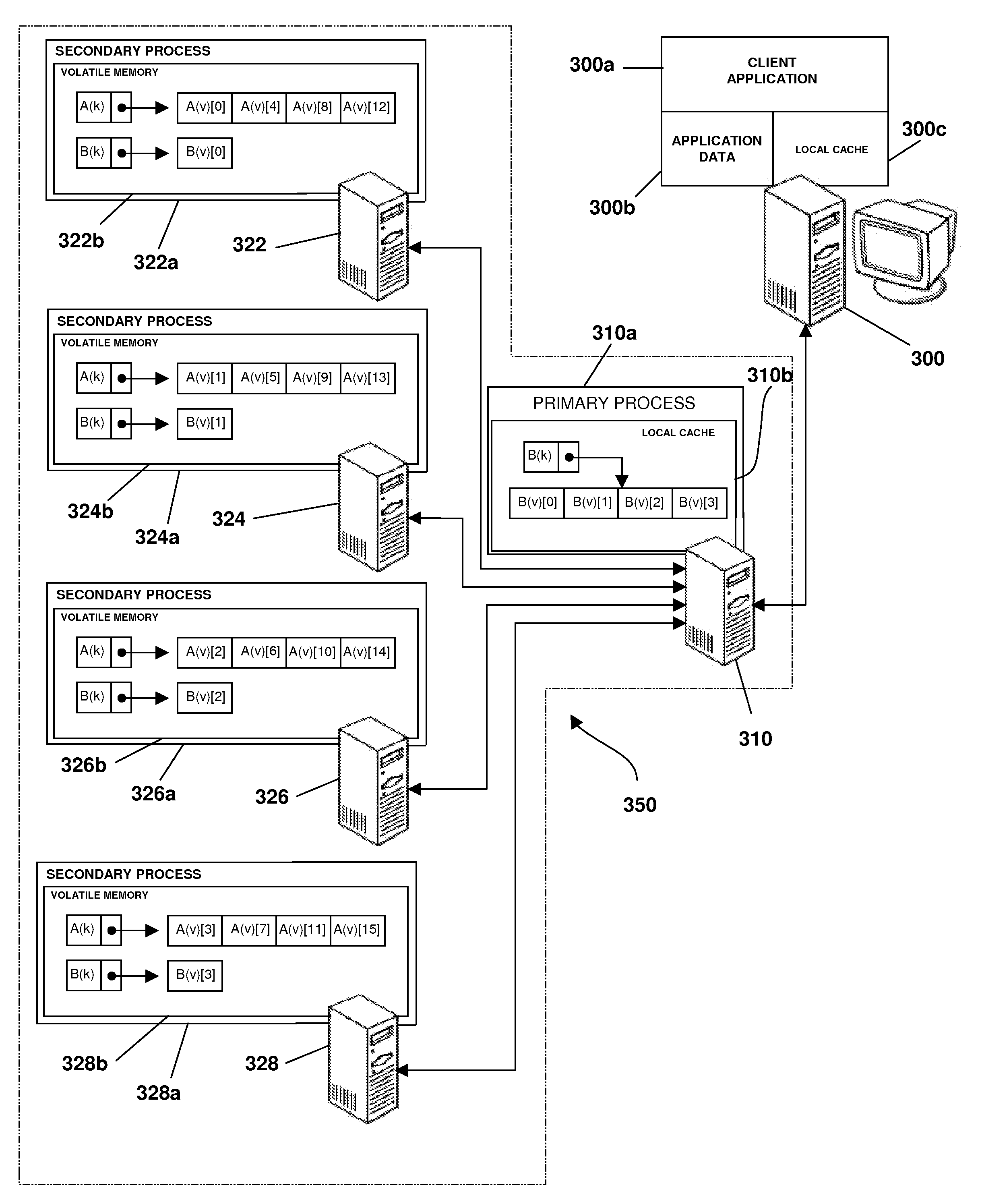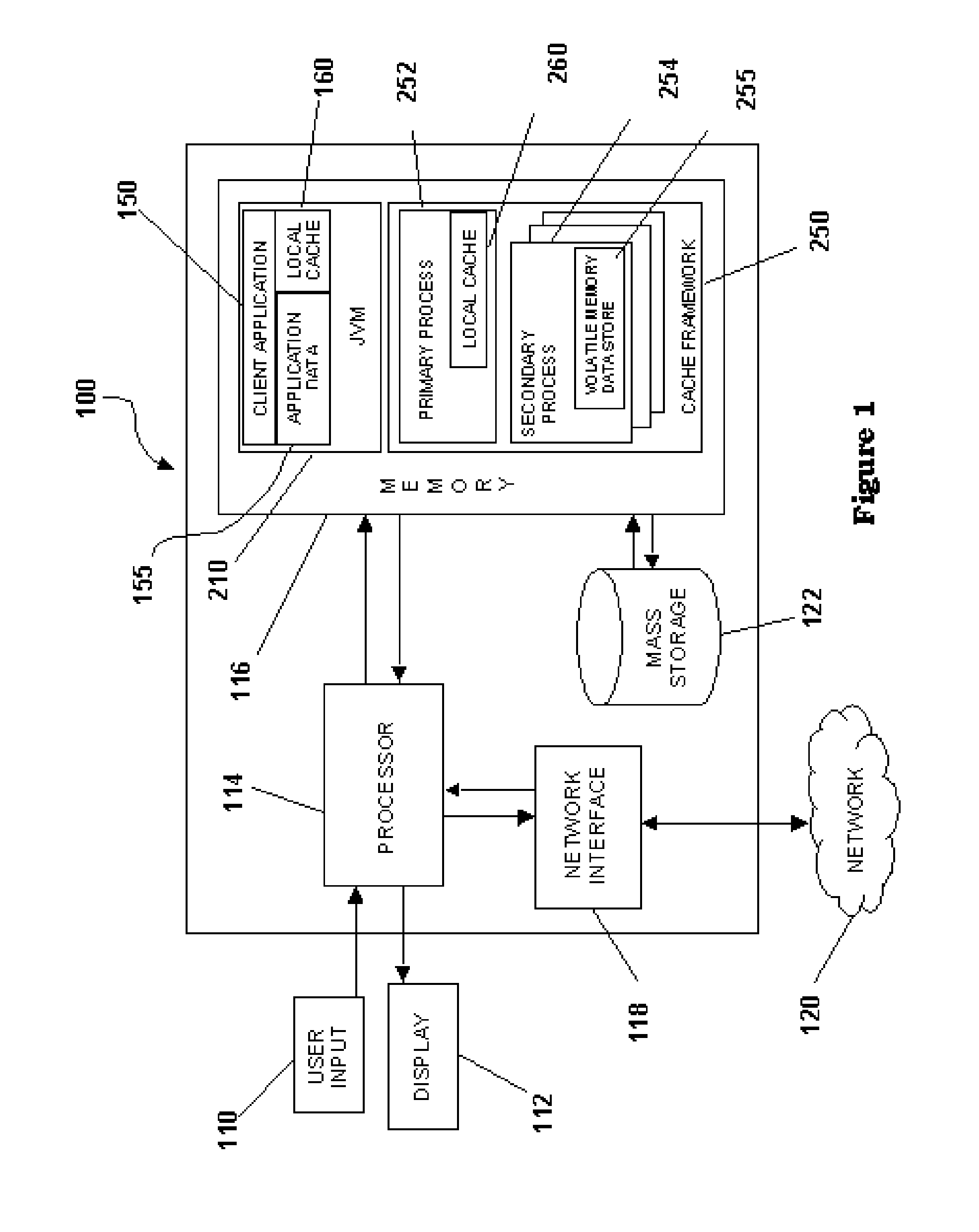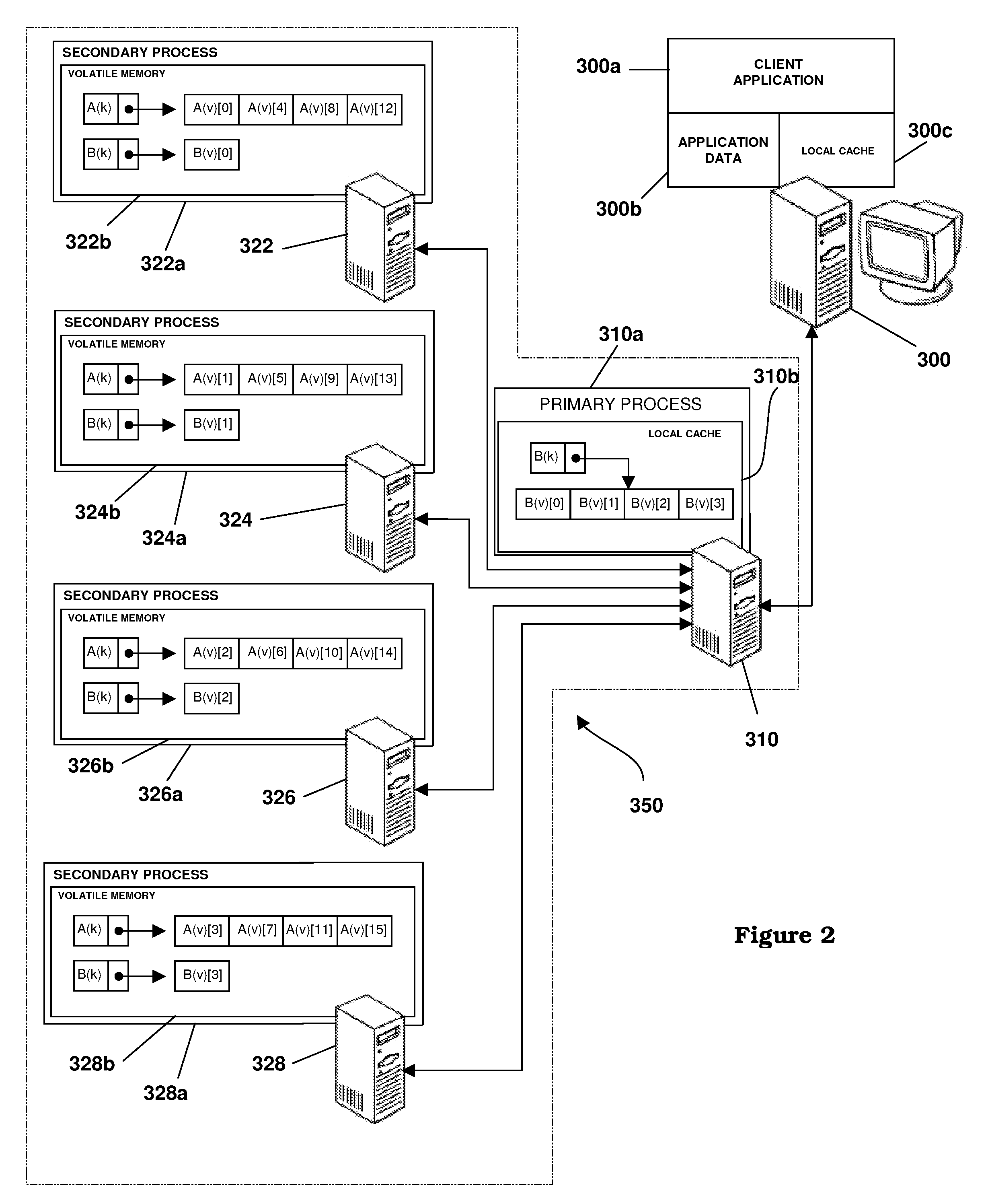Map Based Striping of Data in a Distributed Volatile Memory Environment
a volatile memory and data striping technology, applied in the field of data communication, can solve the problems of large amount of reads and frequent writes, subjected to a significant amount of read operations, and relatively infrequent writes, and achieve the effect of reducing memory utilization
- Summary
- Abstract
- Description
- Claims
- Application Information
AI Technical Summary
Benefits of technology
Problems solved by technology
Method used
Image
Examples
Embodiment Construction
[0024]The embodiments described hereinafter utilize a method for striping the value data of a key-value pair in a keyed data set across multiple host processes, such that each process hosts a portion of the object value for every key. Embodiments shown utilize a cache framework, where keyed data sets are stored in volatile memory cache for fast access, but the invention is not limited to cache frameworks. A keyed data set is a type of data set comprising multiple data values disposed, for example, in objects or records. Each object or record in a keyed data set is associated with a unique key with all objects or records sharing the same key forming the data for a single keyed data set. Objects or records may be randomly accessed based on their key and may be of variable length.
[0025]The processes that collectively store keyed data sets in a cache framework are referred to herein as a process set. Processes are characterized as independent computer tasks having dedicated sets of reso...
PUM
 Login to View More
Login to View More Abstract
Description
Claims
Application Information
 Login to View More
Login to View More - R&D
- Intellectual Property
- Life Sciences
- Materials
- Tech Scout
- Unparalleled Data Quality
- Higher Quality Content
- 60% Fewer Hallucinations
Browse by: Latest US Patents, China's latest patents, Technical Efficacy Thesaurus, Application Domain, Technology Topic, Popular Technical Reports.
© 2025 PatSnap. All rights reserved.Legal|Privacy policy|Modern Slavery Act Transparency Statement|Sitemap|About US| Contact US: help@patsnap.com



